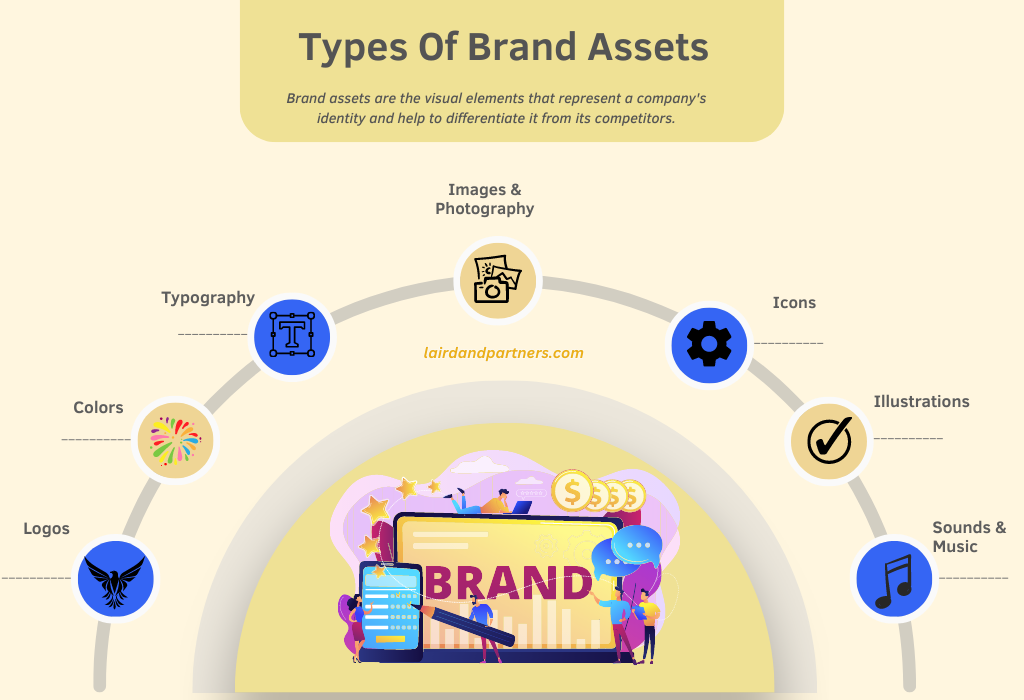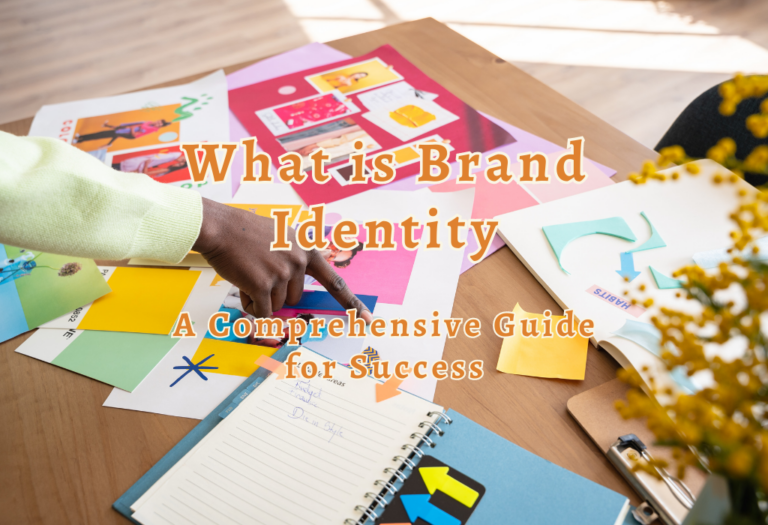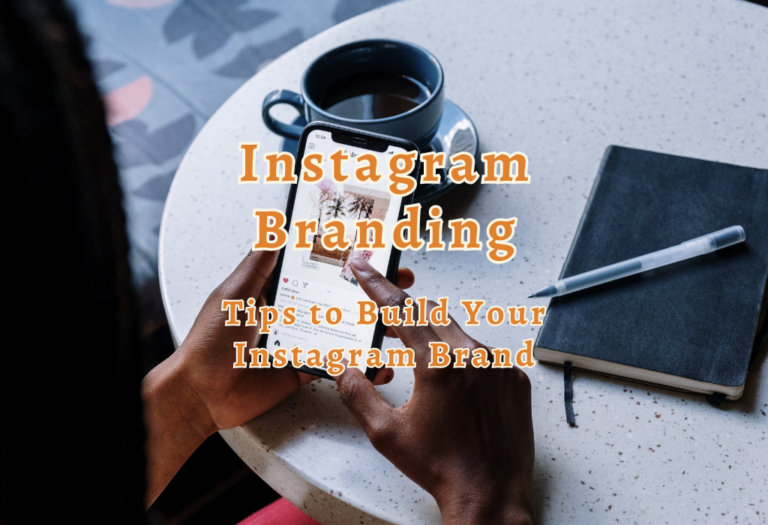What Are Brand Assets? A Comprehensive Guide for Success
Brand assets are the visual elements that represent a company’s identity and help to differentiate it from its competitors. These assets include logos, colors, typography, images, and other design elements that create a consistent look and feel for the brand.
By utilizing these components effectively in marketing materials, businesses can establish a strong brand presence that resonates with their target audience.

More Resources :
Types Of Brand Assets

Why Are Brand Assets Important?
Brand assets play a crucial role in establishing and maintaining a strong brand identity. They create an emotional connection between customers and the brand, fostering trustworthiness and reliability. Here are the main reasons why brand assets play an important role in your business growth:
Builds A Strong Brand Identity
Maintaining a consistent visual language across all marketing platforms helps to create an identity that resonates with customers. By using cohesive visual elements such as logos, colors, typography, and images consistently throughout your marketing efforts, you can create a unified look that reinforces your company’s identity.
Influencing Customer Perception
Your brand assets have the power to shape how customers perceive your business. A well-designed logo or color palette can evoke positive emotions like trust or excitement while also differentiating you from competitors within your industry. Creating a distinct identity is possible through the use of your brand’s visuals, making it evident what separates you from others in the same field.
Building Trust And Loyalty With Customers
Supporting Your Marketing Efforts
A strong set of brand assets makes it easier for marketing teams to create effective campaigns by providing a clear visual language that resonates with target audiences. This consistency ensures that all marketing materials work together seamlessly, reinforcing the overall message and helping achieve better results from advertising efforts. Additionally, having an established brand identity allows businesses to tell their story effectively, connecting with customers on a deeper level.
Helps Your Business Withstand Tough Competition
In today’s saturated marketplaces, standing out from competitors is crucial for success. By investing in high-quality brand assets and maintaining consistency across all touchpoints, companies can differentiate themselves from rivals while also creating a memorable impression on potential clients – ultimately leading to increased sales and long-term growth opportunities.
Brand assets are essential for any business to create a recognizable and memorable identity. They provide an easy way to communicate your brand’s message, values, and personality quickly and effectively.
How to Create Strong Brand Assets?
Creating effective brand assets requires careful planning and consideration of how each element will work together to create a unified look for the brand. It is important to consider factors such as target audience, industry trends, and overall goals when creating these assets. The following steps can help guide you through the process:
- Define Your Brand Strategy
Before diving into design elements, it’s crucial to have a clear understanding of your company’s mission, vision, values, and unique selling proposition (USP). This information will serve as the foundation for all visual decisions made during asset creation.
- Analyze Competitors’ Branding
The next step is researching competitor brands within your industry to get valuable insights into what works well and what doesn’t in terms of design choices. Use this to differentiate yourself from others while still adhering to industry standards.
- Select Colors That Represent Your Brand Personality
Colors evoke emotions and play an essential role in establishing a connection with customers. Choose colors that align with your company’s personality traits or characteristics; you may find this comprehensive guide on color psychology by Canva useful.
- Create a Logo That Reflects Your Identity
Your logo serves as the face of your company – make sure it communicates who you are effectively. Invest time in designing something memorable yet simple enough for easy recognition across various platforms.
- Determine Typography Styles Consistent With Other Assets
Fonts should complement your logo and color choices while remaining legible. Choose a consistent primary font for headlines and a secondary font for body text, ensuring that they work well together.
- Develop Additional Visual Elements (icons, illustrations, etc.)
Depending on the nature of your business or industry, you may need to create other brand assets, such as icons or illustrations, to enhance communication with customers.
Consistent brand assets are essential for a strong brand identity and a successful marketing campaign. Make sure to manage your brand assets correctly and update them regularly to maintain brand consistency and deliver on your brand promise.
How to Use Brand Assets Effectively
Brand assets are essential visual elements that represent your company’s brand identity. They include logos, color palettes, typography, and other design elements that help create a consistent brand image across all platforms. Here are some best practices for using brand assets effectively:
A. Consistency Across All Channels
It’s crucial to use your brand assets consistently on every platform where your company has a presence. This includes consistency on websites, social media posts, advertisements, brochures, business cards, and more. Hence, creating a cohesive experience for customers and reinforcing brand recognition over time.
B. Adhering to Brand Guidelines
Create brand guidelines that outline how each asset should be used. This includes logo placement, size restrictions, color palettes, and typography rules. Ensuring that everyone within the organization understands how to maintain the integrity of the brand’s visual identity is essential.
C. Utilizing Templates
Develop templates for various types of marketing materials, such as email newsletters or social media graphics, using tools like Canva. These templates can help ensure consistency while saving time during content creation.
D. Diversifying Your Visual Content with Different Formats
Use different formats to diversify your visual content while maintaining consistency.
High-quality images that align with your branding can create an emotional connection with customers. Incorporate your brand assets into video content to create a cohesive and engaging experience for viewers.
Use your color palette, typography choices, and other design elements when creating infographics to provide valuable information in an easily digestible format.
E. Monitoring Your Brand Assets Usage
Keep track of how your brand assets are being used both internally and externally by monitoring their usage across various platforms. This allows you to identify any inconsistencies or misuse of these visual elements and take corrective action if necessary. Tools like Brandfolder can help streamline this process by providing a centralized location for storing, managing, and tracking all of your company’s branding materials.
How Can You Protect Your Brand Assets?
Protecting your brand assets is essential to maintain control over how your company is represented in the marketplace. This can be done by:
- Register Trademarks and Copyrights
To protect your brand identity, registering trademarks for distinctive logos, taglines, and product names is essential. By doing so, you gain exclusive rights to use these marks within a specific industry and geographic region while preventing others from using similar designs that could cause confusion among consumers.
In addition to trademark registration, consider securing copyright protection for original creative works like illustrations, photographs, videos, and music compositions that form part of your brand identity. A copyright grants you the exclusive right to reproduce and distribute these works while prohibiting unauthorized copying or distribution.
- Monitor Online Usage of Your Brand Assets
Maintaining vigilance over how others use (or misuse) your brand assets on the internet is vital for protecting their integrity and value. Here are some strategies:
- Take Action Against Infringement
If you detect any unauthorized utilization of your brand property, it is vital to take quick action in order to secure your legal rights and uphold the authenticity of your branding endeavors. Some steps include:
Build Your Brand Assets Today!
Brand Assets include logos, colors, fonts, taglines, packaging design, and other marketing materials.
By creating and managing consistent brand assets regularly according to your brand guidelines, you can build a strong brand with core values that resonate with your target audience.
Contact Laird And Partners today, and let us help you create outstanding brand assets for your business!






